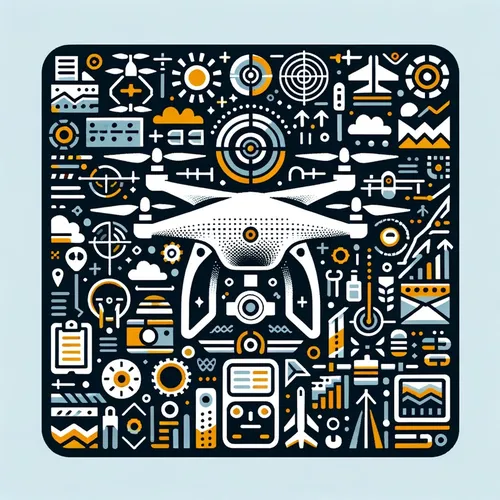Drone Pilots Soar with AI, Batteries, and Big Bucks in 2025
- Author
- Quiet. Please
- Published
- Sun 31 Aug 2025
- Episode Link
- https://www.spreaker.com/episode/drone-pilots-soar-with-ai-batteries-and-big-bucks-in-2025--67568386
This is you Professional Drone Pilot: Flight Tips & Industry Updates podcast.
Today, professional drone pilots stand at the crossroads of rapid industry innovation and evolving business landscapes. With longer battery endurance and AI-powered navigation defining 2025, commercial operators have more powerful platforms at their disposal. According to DSLRPros, next-generation batteries now deliver up to 30 percent more flight time, while refined aerodynamic propellers and control algorithms offer exceptional stability, even in challenging weather. Smart energy management not only enables heavier payloads for high-end cameras or advanced sensors but also ensures efficient power usage, reducing downtime and extending drone lifespan.
Keeping equipment at peak performance is paramount. Archivemarketresearch notes that predictive maintenance, driven by on-board sensors and machine learning, is gaining traction. These systems allow pilots to identify motor inefficiencies, battery wear, or sensor faults before they result in costly failures or create operational risks. Scheduling regular maintenance checks around predictive insights has become a vital best practice—maximize uptime by replacing parts and updating firmware as soon as data signals degradation.
Driven by strong demand, the drone maintenance market itself is projected to grow at over five percent annually through 2033. New business models, such as drone-as-a-service, are carving out opportunities for pilots to offer bundled inspection, mapping, or media solutions to clients who prefer outsourced expertise.
Certification and compliance remain a critical foundation for commercial work. The Federal Aviation Administration requires that remote pilots in the United States renew their online recurrent training every two years and keep their certification readily available. Advanced operations—such as flying near bystanders or in controlled airspace—may require more stringent reviews and in-person flight checks. As regulatory bodies worldwide strengthen rules, staying updated on requirements will keep operations legal and insurable.
Pricing strategies are evolving as client expectations rise. Delivering value often means leveraging advanced analytics, offering post-flight data services, and demonstrating a commitment to quality assurance—the DroneDesk blog recommends integrating detailed client briefings and post-mission reports to stand out in a crowded market. Insurance is also front of mind, especially as liability policies become more nuanced in response to complex urban or industrial applications.
This past week, several developments have made headlines: AI-driven drone cleaning systems are setting new standards for high-rise building maintenance, according to LucidBots; major infrastructure inspection contracts have been announced in the renewable energy sector; and a surge in public safety drone deployments has sparked renewed discussion around privacy and airspace management.
Looking ahead, experts predict that autonomous flights and integrated data platforms will reshape workflows, enabling pilots to manage larger fleets and deliver richer insights. To thrive, focus on mastering next-gen flight techniques, embrace predictive maintenance, and keep credentials current—making yourself indispensable in an ever-advancing field.
Thank you for tuning in, and be sure to join us next week for more industry insights and actionable tips. This has been a Quiet Please production, and for more, check out Quiet Please Dot A I.
For more http://www.quietplease.ai
Get the best deals https://amzn.to/3ODvOta
